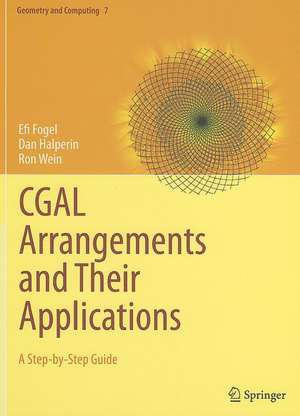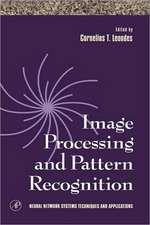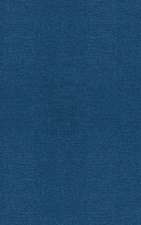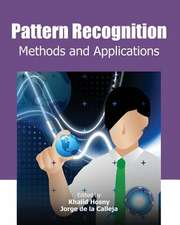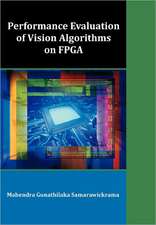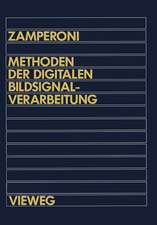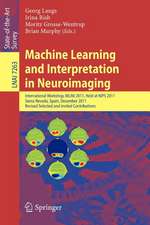CGAL Arrangements and Their Applications: A Step-by-Step Guide: Geometry and Computing, cartea 7
Autor Efi Fogel, Dan Halperin, Ron Weinen Limba Engleză Hardback – 25 ian 2012
This book is about how to use CGAL two-dimensional arrangements to solve problems. The authors first demonstrate the features of the arrangement package and related packages using small example programs. They then describe applications, i.e., complete standalone programs written on top of CGAL arrangements used to solve meaningful problems – for example, finding the minimum-area triangle defined by a set of points, planning the motion of a polygon translating among polygons in the plane, computing the offset polygon, finding the largest common point sets under approximate congruence, constructing the farthest-point Voronoi diagram, coordinating the motion of two discs moving among obstacles in the plane, and performing Boolean operations on curved polygons.
The book contains comprehensive explanations of the solution programs, many illustrations, and detailed notes on further reading, and it is supported by a website that contains downloadable software and exercises. It will be suitable for graduate students and researchers involved in applied research in computational geometry, and for professionals who require worked-out solutions to real-life geometric problems. It is assumed that the reader is familiar with the C++ programming-language and with the basics of the generic-programming paradigm.
| Toate formatele și edițiile | Preț | Express |
|---|---|---|
| Paperback (1) | 343.12 lei 6-8 săpt. | |
| Springer Berlin, Heidelberg – 23 aug 2016 | 343.12 lei 6-8 săpt. | |
| Hardback (1) | 351.04 lei 3-5 săpt. | |
| Springer Berlin, Heidelberg – 25 ian 2012 | 351.04 lei 3-5 săpt. |
Preț: 351.04 lei
Preț vechi: 438.80 lei
-20% Nou
Puncte Express: 527
Preț estimativ în valută:
67.17€ • 73.19$ • 56.60£
67.17€ • 73.19$ • 56.60£
Carte disponibilă
Livrare economică 02-16 aprilie
Preluare comenzi: 021 569.72.76
Specificații
ISBN-13: 9783642172823
ISBN-10: 3642172822
Pagini: 310
Ilustrații: XIX, 293 p.
Dimensiuni: 210 x 279 x 18 mm
Greutate: 0.93 kg
Ediția:2012
Editura: Springer Berlin, Heidelberg
Colecția Springer
Seria Geometry and Computing
Locul publicării:Berlin, Heidelberg, Germany
ISBN-10: 3642172822
Pagini: 310
Ilustrații: XIX, 293 p.
Dimensiuni: 210 x 279 x 18 mm
Greutate: 0.93 kg
Ediția:2012
Editura: Springer Berlin, Heidelberg
Colecția Springer
Seria Geometry and Computing
Locul publicării:Berlin, Heidelberg, Germany
Public țintă
GraduateCuprins
Introduction.- Basic Arrangements.- Queries and Free Functions.- Arrangements of Unbounded Curves.- Arrangement-Traits Classes.- Extending the Arrangement.- Adapting to Boost Graphs.- Operations on (Curved) Polygons.- Minkowski Sums and Offset Polygons.- Envelopes.- Prospects.- Bibliography.- Index.
Notă biografică
The author team work in the Applied Computational Laboratory of Tel Aviv University. They are among the key groups worldwide using and contributing to CGAL resources, and they have significant experience in the development of the related theory and programs, and in teaching applied computational geometry to computer science and engineering students. They also have related industrial consulting experience.
Textul de pe ultima copertă
Arrangements of curves constitute fundamental structures that have been intensively studied in computational geometry. Arrangements have numerous applications in a wide range of areas – examples include geographic information systems, robot motion planning, statistics, computer-assisted surgery and molecular biology. Implementing robust algorithms for arrangements is a notoriously difficult task, and the CGAL arrangements package is the first robust, comprehensive, generic and efficient implementation of data structures and algorithms for arrangements of curves.
This book is about how to use CGAL two-dimensional arrangements to solve problems. The authors first demonstrate the features of the arrangement package and related packages using small example programs. They then describe applications, i.e., complete standalone programs written on top of CGAL arrangements used to solve meaningful problems – for example, finding the minimum-area triangle defined by a set of points, planning the motion of a polygon translating among polygons in the plane, computing the offset polygon, finding the largest common point sets under approximate congruence, constructing the farthest-point Voronoi diagram, coordinating the motion of two discs moving among obstacles in the plane, and performing Boolean operations on curved polygons.
The book contains comprehensive explanations of the solution programs, many illustrations, and detailed notes on further reading, and it is supported by a website that contains downloadable software and exercises. It will be suitable for graduate students and researchers involved in applied research in computational geometry, and for professionals who require worked-out solutions to real-life geometric problems. It is assumed that the reader is familiar with the C++ programming-language and with the basics of the generic-programming paradigm.
This book is about how to use CGAL two-dimensional arrangements to solve problems. The authors first demonstrate the features of the arrangement package and related packages using small example programs. They then describe applications, i.e., complete standalone programs written on top of CGAL arrangements used to solve meaningful problems – for example, finding the minimum-area triangle defined by a set of points, planning the motion of a polygon translating among polygons in the plane, computing the offset polygon, finding the largest common point sets under approximate congruence, constructing the farthest-point Voronoi diagram, coordinating the motion of two discs moving among obstacles in the plane, and performing Boolean operations on curved polygons.
The book contains comprehensive explanations of the solution programs, many illustrations, and detailed notes on further reading, and it is supported by a website that contains downloadable software and exercises. It will be suitable for graduate students and researchers involved in applied research in computational geometry, and for professionals who require worked-out solutions to real-life geometric problems. It is assumed that the reader is familiar with the C++ programming-language and with the basics of the generic-programming paradigm.
Caracteristici
A practical guide to an important area of computational geometry Contains numerous worked examples and program descriptions Supported by a dedicated website Includes supplementary material: sn.pub/extras
